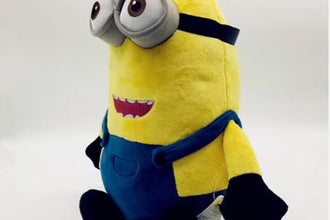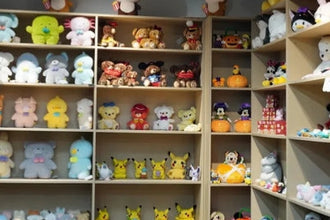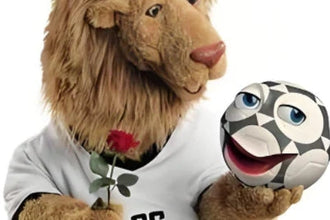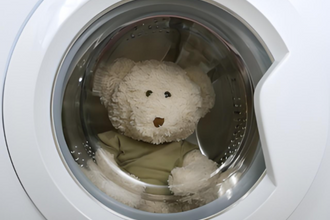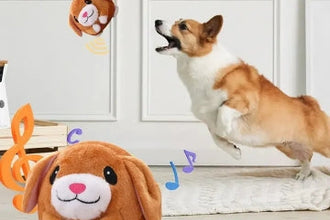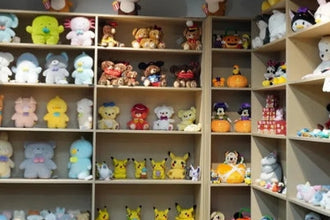Plush toys may seem charming from their exterior appearance alone, but what gives them their soft touch, fluffy shape, and long-term cuddle appeal is hidden below the surface: their stuffing material. This internal material determines comfort levels as well as health and environmental impacts of plush toys.
An excellent filling not only ensures the plush toy feels soft and cuddly to hug, but it can also withstand time and affection. Selecting an appropriate toy filling material requires thoughtful consideration: soft yet supportive yet resilient enough to be clean and eco-friendly. In this post, we'll go through various types of fillings for stuffed animals so that you can find one with which your plush creations have the ideal soft core.

Part 1. Common Types of Filling for Stuffed Animals
With today's rapidly developing plush toy industry, an ever-increasing range of stuffings for stuffed animals are emerging to meet growing consumer demands. From polyester fiberfill and microfibers, all the way through eco-friendly natural alternatives and luxurious microfibers - each material lends unique textures and performance characteristics to plush creations.
Underneath we provide a detailed overview of the most widely-used filling types on the market to help you select an option that meets both product positioning and user expectations. Let's step inside the cozy world of plush toys!
1. Polyester Fiberfill (PP Cotton)
Polyester fiberfill, commonly referred to as PP cotton or hollow fiber, is one of the primary filling materials in plush toy manufacturing. Created by processing fine polyester short fibers through opening and carding techniques, it offers lightweight yet fluffy, budget-friendly sculpting that's suitable for mass production - often called the universal core for plush toys!
Features:
- Soft touch and comfortable hugging feel
- Excellent resilience, not easily deformed
- Machine washable and easy to maintain
- Cost-effective, ideal for large-scale production
Applications: All kinds of standard plush toys, pillows, cushions, etc.
2. Microfiber Filling
Microfiber filling is a premium upgrade from regular polyester fiber, featuring fibers that are finer than one-hundredth the diameter of a human hair. It feels ultra-smooth and more compact, making it perfect for mid-to-high-end plush products, especially those designed for babies or premium gifting.
Features:
- Smooth, delicate texture with a luxurious feel
- Resists clumping, better shape retention
- Skin-friendly and gentle on sensitive skin
Applications: High-quality plush toys, infant plush products, and gift-grade items.
3. Cotton Stuffing
Natural cotton is a traditional stuffing material valued for its natural origin, breathability, and lack of chemical additives. It’s a popular choice among eco-conscious brands. Often seen in handcrafted or vintage-style plush toys, cotton imparts a nostalgic and cozy feel. However, it’s more prone to moisture absorption and clumping, making it better suited for niche or custom production.
Features:
- Natural and eco-friendly, non-irritating
- Soft hand feel but slightly less supportive
- Moisture-absorbent, not washable, prone to clumping
Applications: Eco-friendly toys, cultural and creative products, small-batch custom plush items.

4. Foam Beads (EPS Beads)
Foam beads are granular filling materials commonly used in bean bags, body pillows, and larger plush products. They offer both flexibility and support, allowing toys to adapt and reshape easily—ideal for interactive and functional designs.
Features:
- Granular texture with strong support
- Shape-conforming and moldable
- Often used with specially designed outer fabrics
Applications: Bean bag plushies, sit-on plush toys, uniquely shaped or interactive plush products.
5. Silicone Fiber
Silicone-treated polyester fiber, also known as silicone fiber, boasts superior elasticity, smoothness, and pressure resistance. It’s commonly used in high-quality plush products that require long-term use and frequent compression.
Features:
- Excellent elasticity, long-lasting fluffiness
- Maintains shape, smooth touch
- Slightly higher cost, premium quality
Applications: High-end custom toys, pillows, plush items for regular and intensive use.
6. Natural Fillings: Pea Grains, Buckwheat Hulls, Wood Chips, etc.
These fillings are made from 100% natural materials such as grain husks, wood shavings, or herbal pouches. Popular in vintage-style or sensory-training plush toys, they emphasize handcrafting, nature, and sustainability.
Some may also offer mild aromatic therapy effects. However, they require extra care in storage and hygiene and are best suited for small-batch, artisanal products.
Features:
- All-natural and biodegradable
- May offer fragrance or unique texture
- Moisture-sensitive, require mold prevention
Applications: Cultural or handmade plush toys, retro-style dolls, children’s sensory education toys.
7. Recycled Fiberfill
Recycled fiberfill is produced from repurposed plastic bottles or textile waste, offering both comfort and sustainability. It has become the filling of choice for many global brands targeting environmentally conscious consumers, especially in markets such as the US and Europe.
Features:
- Environmentally friendly, reduces carbon footprint
- Affordable and sustainable
- Quality may vary depending on source materials—reliable suppliers recommended
Applications: Eco-friendly plush toys, toys intended for export to environmentally regulated markets.
8. Memory Foam
Originally developed for aerospace and high-end mattresses, memory foam is now used in premium plush toys and ergonomic pillows. Its slow rebound and body-conforming properties deliver exceptional support and comfort.
Features:
- Conforms to body shape, excellent support
- Slow rebound, “remembers” shape
- Soft yet elastic feel
- Enhances comfort, relieves pressure
Applications: High-end plush toys, ergonomic pillows, therapeutic or adult plush products.

9. Wool
Wool is a natural protein fiber known for its elasticity, breathability, and thermal regulation. In premium and custom plush toys, it serves as an eco-friendly and biodegradable filling with a warm, classic feel.
Features:
- Naturally elastic, retains shape well
- Great breathability and temperature regulation
- Environmentally friendly and biodegradable
- Soft, warm, and slightly vintage in touch
Applications: High-end custom plush toys, parent-child plushies, retro-themed and eco-conscious plush collections.
These filling options offer a wide spectrum of qualities—from softness and bounce to environmental impact and market positioning—providing endless possibilities for plush toy design. Choosing the right filling is like finding the toy’s “soulmate,” and is a key step in setting your brand apart in a competitive market.
Part 3. How to Choose the Right Fillings for Stuffed Animals?
Selecting the right stuffing material for plush toys is more than just about softness; it directly impacts the product’s feel, appearance, durability, and even brand value. Here are the key factors to consider when deciding on the ideal filling for your stuffed animals:
1. Target Audience and Safety Requirements
If your product is designed for babies, toddlers, or children, safety should be the top priority. Choose hypoallergenic, non-toxic materials that comply with international toy safety standards (such as EN71, ASTM F963, or CPSIA).
Natural cotton, high-quality microfiber, or food-grade polyester fiberfill are commonly used due to their safe and skin-friendly nature. For infants, consider fillings that are soft, breathable, and washable.
Best choices: Organic cotton, microfiber, silicone fiber, or certified polyester fiberfill.
2. Desired Touch and Aesthetic
The tactile experience is crucial for plush toys. If you aim to create a cuddly and fluffy toy, polyester fiberfill is a lightweight, bouncy, and soft choice. For a more luxurious or dense touch, microfiber or silicone-treated fibers offer a higher-end feel. If you want firm support for ergonomic designs like pillows or plush chairs, memory foam or wool may be more appropriate.
Soft and fluffy: Polyester fiberfill, microfiber.
Firm and supportive: Memory foam, wool.
3. Environmental Considerations
Sustainability is increasingly important for modern consumers. If your brand values eco-friendliness or targets environmentally conscious buyers, consider using recycled polyester fiberfill (made from plastic bottles or old garments) or natural fillings such as organic cotton, buckwheat hulls, or wool. These options help reduce carbon footprint and appeal to eco-minded markets.
Eco-friendly options: Recycled fiberfill, natural cotton, buckwheat, wool.
4. Budget and Production Scale
For large-scale production or lower-cost products, affordability and ease of processing become vital. Polyester fiberfill is one of the most cost-effective materials on the market, offering great elasticity and ease of stuffing. It is ideal for mass production due to its consistency, wide availability, and machine-washable nature.
Best for cost-efficiency: Regular polyester fiberfill (PP cotton).
5. Product Positioning and Brand Strategy
High-end plush toys or therapeutic products benefit from using premium or functional fillings that enhance their value. Memory foam, silicone fiber, or special scented natural fillings (like lavender bags or herbs) can differentiate your brand in a crowded market. Unique fillings not only improve user experience but can also serve as strong marketing points.
For premium or niche markets: Memory foam, silicone fiber, natural aromatherapy fillers (e.g., lavender, wood chips).
Part 4. Factory-Grade Stuffing vs. DIY Filling: Why Choose Implementer?
When it comes to making stuffed animals, the choice of stuffing material has a significant impact on the toy's softness, appearance, and quality, durability, and market competitiveness.
For individual DIY hobbyists, materials like polyester fiber (often bought from craft stores) are commonly used. These options are easy to obtain and handle, offering basic softness. However, such hand-filled methods often lack consistency in density, durability, and may not meet environmental or safety standards required for commercial use.
In contrast, factory-grade stuffing solutions focus on:
- Cost control and production efficiency
- Material consistency and safety assurance
- Compliance with international quality and environmental certifications (such as CPSIA, CE, EN71)
- Customizability for a wide range of product needs
This is exactly where Implementer stands out.
As an experienced custom plush toy manufacturer, Implementer understands how crucial stuffing is to the final quality and functionality of a stuffed toy. That's why we offer comprehensive one-stop stuffing solutions to clients around the world, including:
1. A Wide Range of Certified Materials
Choose from various high-quality stuffing materials, including:
- Polypropylene Cotton (PP Cotton)
- Down Cotton
- Foam
- Heat-Conductive Particles
- Soft Rubber Particles
And other specialty materials tailored to your specific needs — from basic plush to premium custom toys.

2. Expert Stuffing Consultation & Sample Development
We create tailored stuffing strategies based on your toy's structure, intended use, and target market to ensure optimal performance in touch, shape, and function for each design.
3. Full OEM/ODM Support
From material selection and internal structure design to prototyping and mass production, Implementer helps you save time and cost across the entire development cycle.
4. International Compliance
All our stuffing materials comply with major export regulations, helping clients enter global markets with confidence.
Whether you are an e-commerce brand, gift company, children's product developer, or toy retailer, Implementer can provide scalable, sustainable, and reliable stuffing solutions aligned with your product goals. Let your plush toys stand out in a competitive market with the trusted support of Implementer.
Final Words
Whether you're creating handmade plush toys or producing them in bulk, selecting the right stuffing for stuffed animals is a crucial step in crafting high-quality products. The stuffing not only affects touch and appearance but also plays a vital role in user safety and satisfaction.
If you're unsure about which material to choose, feel free to contact Implementer. Let us assist you in giving your plush toys the perfect inner soul!


